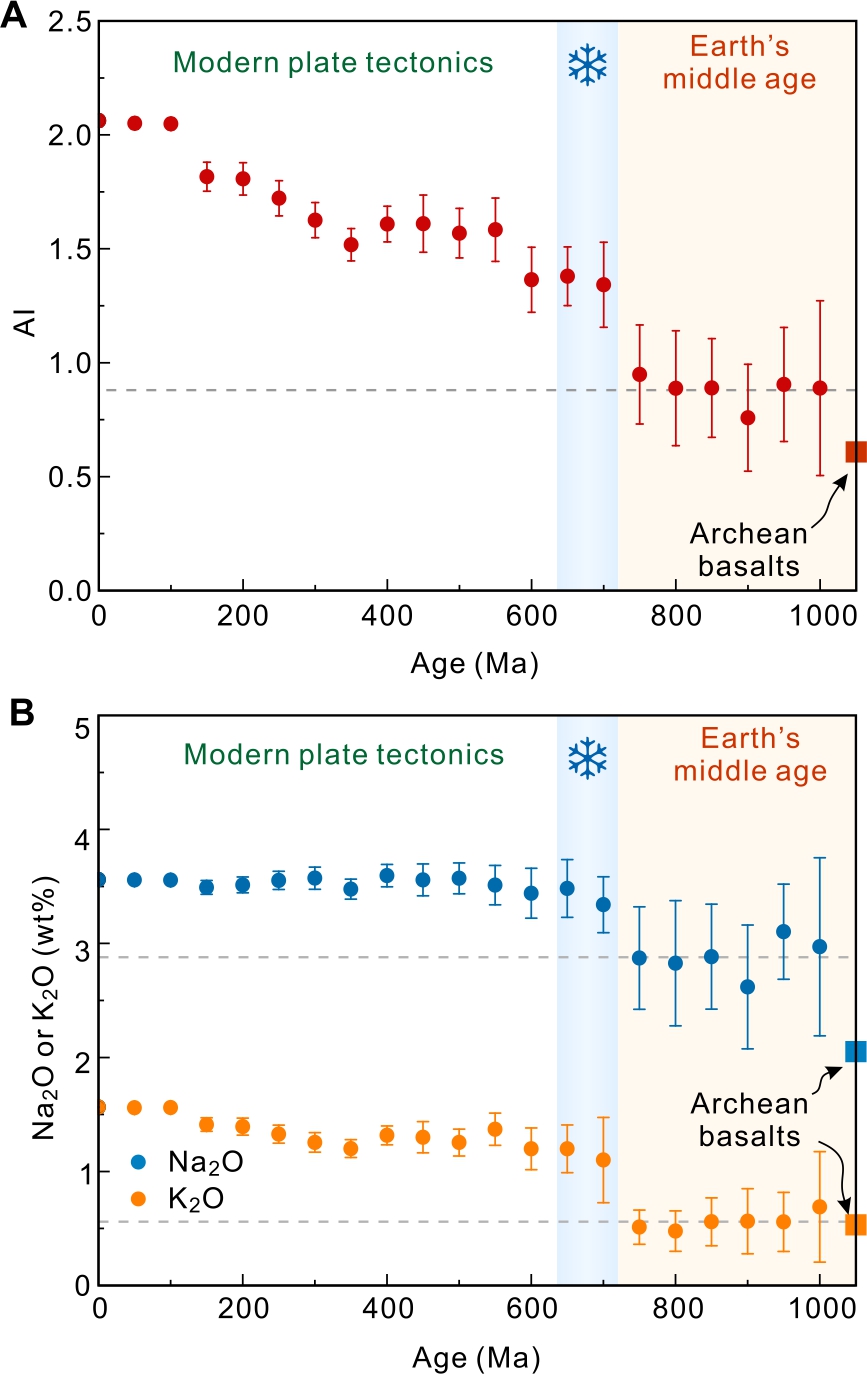Enhanced Mantle Cooling During Late-Neoproterozoic Records Onset of Modern Plate Tectonics
Whether or not some form of plate tectonics operated during the Archaean eon, what tectonic regime may have preceded it, and how Earth transitioned into the modern plate tectonic regime, are fundamental questions that pertain to the development and maintenance of a habitable planet.
The temperature of the convecting mantle exerts a first-order control on the rheology, composition, and consequently, tectonic behavior of Earth's lithosphere. Earth's upper mantle has been cooling since the Mesoarchean. However, the cooling of the upper mantle since the Archean has generally been considered broadly linear.
Recently, the research team led by Prof. SUN Weidong from the Institute of Oceanology of the Chinese Academy of Sciences (IOCAS) and co-researchers from Curtin University and Geological Survey of Western Australia highlighted a remarkable mantle cooling event that records the onset of modern plate tectonics.
The study was published in a Nature Index journal Earth and Planetary Science Letters on Sept. 21.
Intraplate continental basaltic rocks are mostly generated by adiabatic upwelling of the convecting mantle due to the extension of the lithosphere and provide a direct means of interrogating the thermal state of the asthenosphere. The degree of mantle melting (F) and the composition of intracontinental basaltic rocks are largely a function of the temperature of the convecting mantle, which is commonly parameterized as mantle potential temperature (TP, the temperature a package of the convecting mantle would attain at the surface if extrapolated along an adiabat without melting).
The simulation of mantle partial melting using pMELTS software denotes that the alkali index [AI, = (Na2O +K2O)2/(SiO2– 35); oxides as wt%] of basaltic melt is a direct function of temperature if the pressure of melting is confined within a specific range. Then, researchers performed statistical analysis on a global geochemical database of intracontinental basaltic rocks to investigate geochemical variations over the past billion years. The mean AI of samples remains relatively constant before the Cryogenian (~720-635 million years ago), while a steep increase in mean AI occurs during the Cryogenian to Ediacaran (~720-541 million years ago). Correspondingly, average Na2O and K2O contents also increase rapidly during this period.
Although the AI of intracontinental basalts cannot be used to directly estimate the mantle potential temperature, it likely reflects variations in the temperature and pressure conditions of subcontinental mantle melting. A Monte Carlo simulation was applied to generate an evolution process of TP during the last 10 billion years using the trend of AI and existing estimates of TP. The TP remains relatively constant before the Cryogenian consists of reduced subduction and orogenic quiescence in Earth's middle age. Secular variations in the generation temperature (Tg) of basalts derived from the depleted mantle also show a decrease of >50 ℃ after the Cryogenian. The enhanced mantle cooling event that TP decreased by around 50 ℃ to 1400 ℃ during the Cryogenian to Ediacaran is coincident with the widespread appearance of low thermal gradient (T/P) metamorphic rocks, reflecting cold subduction of the oceanic lithosphere under modern style plate tectonic regime.
"We suggest that the onset of modern plate tectonics resulted in enhanced mantle cooling due to the recycling of a much greater volume of cold oceanic lithosphere into the mantle, and may have been driven by the addition of huge volumes of sediments to lubricate subduction zones following the thawing of Snowball Earth," said CHEN Qian, first author of the study.
"This study provides new insight into the onset of modern plate tectonics and its impacts on the evolution of mantle thermal state", said Prof. LIU He, the corresponding author.
This study was supported by the National Natural Science Foundation of China, etc.

Secular variations of the compositions of global-scale intracontinental basalts over the past billion years

The thermal evolution model of the mantle
Qian Chen, He Liu*, Tim Johnson, Michael Hartnady, Christopher L Kirkland, Yongjun Lu, Wei-dong Sun. (2022). Intraplate continental basalts over the past billion years track cooling of the mantle and the onset of modern plate tectonics, Earth and Planetary Science Letters, 597: 117804.
(Text by CHEN Qian & LIU He)
Media Contact:
ZHANG Yiyi
Institute of Oceanology
E-mail: zhangyiyi@qdio.ac.cn
(Editor: ZHANG Yiyi)